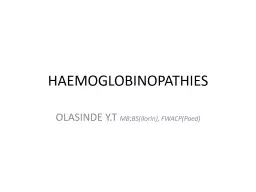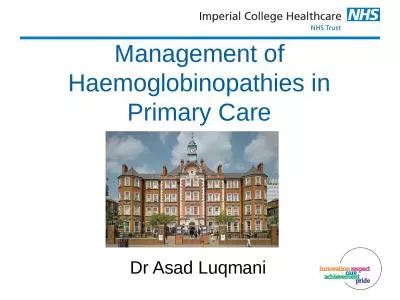PPT-HAEMOGLOBINOPATHIES OLASINDE Y.T
Author : PlayfulSpirit | Published Date : 2022-08-04
MBBSIlorin FWACP Paed Outline Intro def Normal haemoglobin structure function Classification of haemoglobinopathies Structural Hb Variants Thalassaemias Epidemiology
Presentation Embed Code
Download Presentation
Download Presentation The PPT/PDF document "HAEMOGLOBINOPATHIES OLASINDE Y.T" is the property of its rightful owner. Permission is granted to download and print the materials on this website for personal, non-commercial use only, and to display it on your personal computer provided you do not modify the materials and that you retain all copyright notices contained in the materials. By downloading content from our website, you accept the terms of this agreement.
HAEMOGLOBINOPATHIES OLASINDE Y.T: Transcript
Download Rules Of Document
"HAEMOGLOBINOPATHIES OLASINDE Y.T"The content belongs to its owner. You may download and print it for personal use, without modification, and keep all copyright notices. By downloading, you agree to these terms.
Related Documents


